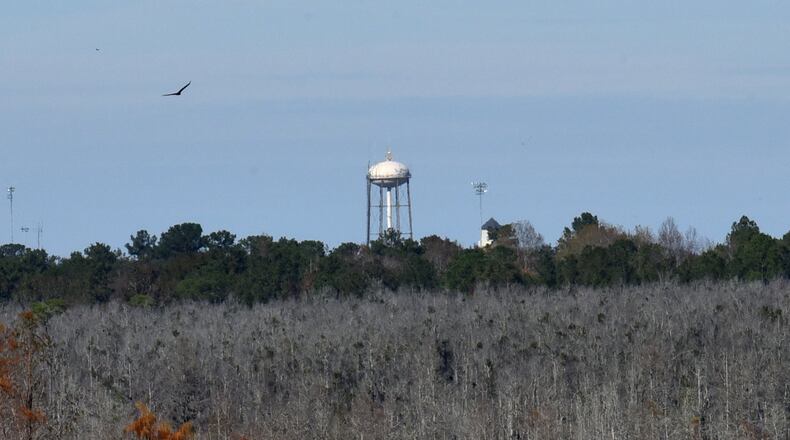The Environmental Protection Agency on Thursday issued its long-awaited action plan for a dangerous class of unregulated chemicals, but it stopped short of setting a limit for drinking water.
The chemicals, known collectively as per- and polyfluoroalkyl substances, or PFAS, have been linked to a number of harmful health effects in humans, including kidney and testicular cancer; high cholesterol; thyroid disease; reproductive problems; and a weakened immune response to vaccines in children.
PFAS have been used since the 1950s in a variety of industrial and household products, including non-stick pans, stain-resistant carpets and fabrics, cleaning solutions and some firefighting foams.
The chemicals have turned up at elevated levels in the drinking water of millions, including in northeast Georgia where the carpet industry has been blamed by some for polluting local water sources.
So far, the EPA has only issued an advisory, which it defines as “informal technical guidance,” for PFAS in drinking water, and water systems are not currently required to test for it.
The plan released Thursday did not include any new regulation. The EPA said it was “moving forward” with the process to set a drinking water limit and list PFAS as a hazardous substance. It also said PFAS will be included on the next round of federal monitoring, which is done every five years.
“None of these processes can be done overnight,” EPA Acting Administrator Andrew Wheeler told reporters at a press conference.
Delaware Senator Tom Carper, the top Democrat on the Senate Environment and Public Works Committee, issued a statement accusing the EPA of backtracking on earlier promises that the action plan would include a drinking water standard for PFAS.
“While EPA acts with the utmost urgency to repeal regulations, the agency ambles with complacency when it comes to taking real steps to protect the water we drink and the air we breathe,” Carper said.
Andrew Rosenberg, director of the Union of Concerned Scientists’ Center for Science and Democracy, said his organization was “very concerned” about what he characterized as a delay in addressing PFAS contamination.
“They seem to be just shuffling the chairs for a really major public health hazard,” he said.
Last year, the Union of Concerned Scientists published emails that showed an unnamed White House official describing PFAS as a public relations “nightmare" and efforts to delay publication of a study showing their toxicity.
About the Author
The Latest
Featured


